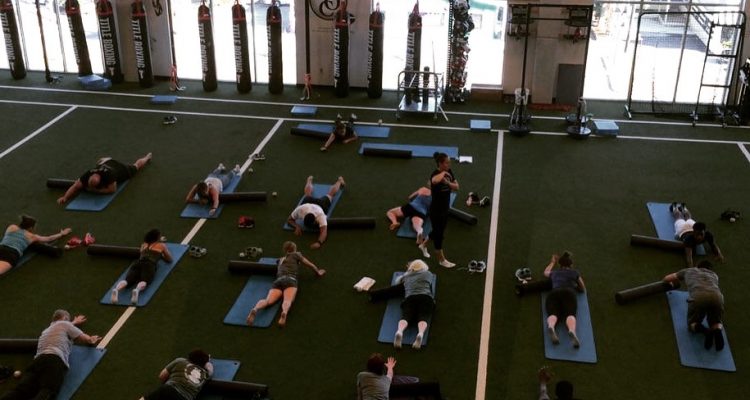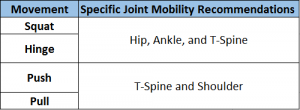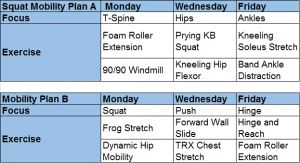These days, it is impossible to talk about strength and conditioning without hearing the words mobility or “prehab.” While there are countless reasons for you to train mobility, figuring out how, when, or what to do can be overwhelming. The fitness industry exacerbates this frustration by constantly hawking overpriced, unneeded mobility gadgets. Why spend $40 on a “Self-myofascial release ball” when a $4 lacrosse ball can be just as effective?
Even if you possess all the cool equipment, you may only have 30 minutes a day to train. With all the techniques out there, you could easily spend an hour making sure you foam roll, activate, and mobilize all your muscles and joints. In reality, this is unnecessary. Mobility training can be easily and systematically programmed into your daily routine without adding extra time or equipment. Here’s how:
Periodize your Prehab
A good training plan often focuses on one goal at a time. Trying to train everything at once results in little progression in anything. Take your basic periodized resistance training: you might focus on hypertrophy for one month, then strength, then power. Mobility should be no different. Categorize your training by the movement, or the joint:
By the Movement
Identify which movements need work and focus on improving those movements only. You may have the hip and ankle mobility to squat properly, but you can’t overhead press without your form breaking down. The fundamental movements to focus on are:
Identify which joint needs work and focus on improving that joint only. For instance, if you have proper ankle mobility, don’t waste time working on it. Your established mobility will maintain itself during the training session. Each joint has several movements or muscles that affect it. These joints break down into:
By the Joint (with videos!)
- Shoulders
-
-
- Pecs - TRX Chest Stretch
- Lats - Ball Lat Mobility
- T-Spine
- Extension - Foam Roller Extension
- Rotation - All 4’s Thoracic Rotation
- Hips
- Flexion - Prying Kettlebell Squat
- Extension - Kneeling Hip Flexor
- Internal and External Rotation - Dynamic Hip Mob
-
- Ankles
- Flexion - Kneeling Soleus Stretch
Here are two examples of how you can program based on the joint or the movement.
Rest Efficiently
Every workout has some form of rest built into it. Whether your rest is regimented or as needed, utilize that time to work on your mobility. Often times, 30-60 seconds is all you need to recover and complete a mobility drill.
Mobility AND Stability
When you train mobility, injury risk can increase because you aren’t used to lifting and stabilizing weight in these new-found ranges of motion. This is why it is important to couple mobility exercises with stability exercises. In other words, use a mobility exercise to achieve new ranges of motion, and then perform an accompanying strength exercise to train the joint’s stability in that new-found range. For example, perform a lat mobility exercise before doing lat pulldowns or a chin up.
You can safely and effectively tackle your mobility issues with the proper planning and execution. Set goals, create a plan, and conquer your fitness!



